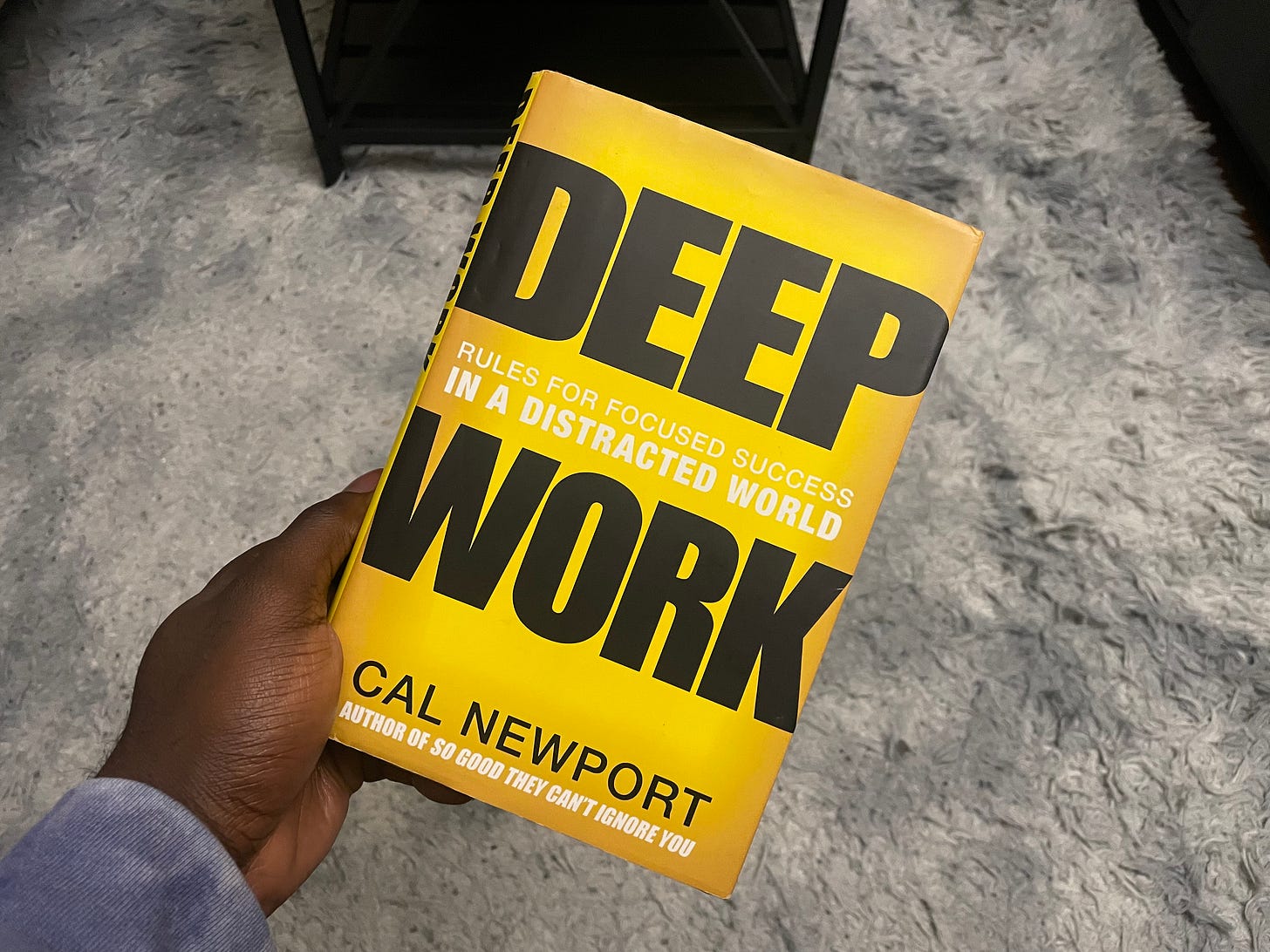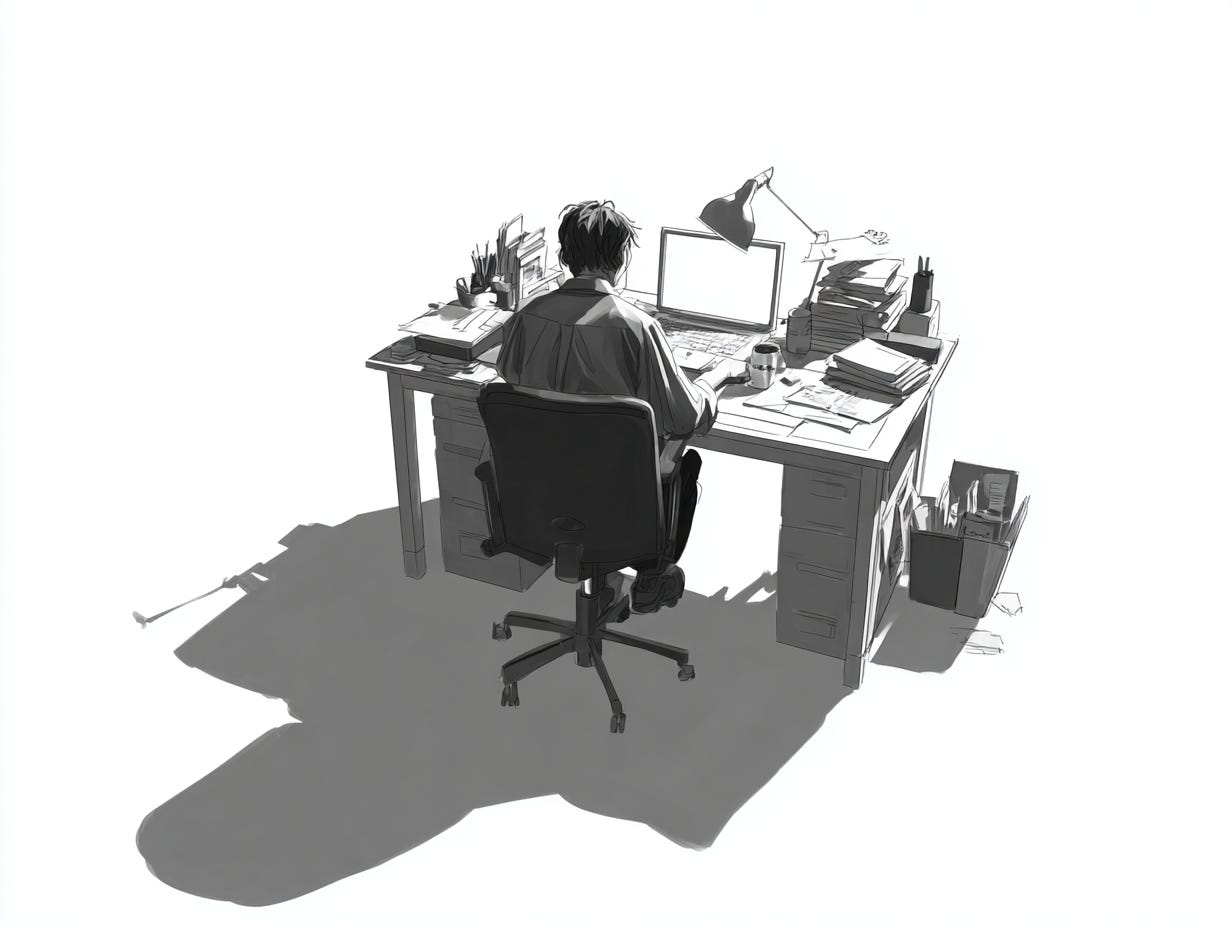I.
I first read Deep Work in 2016, at the start of grad school, and it remained one of the most impactful “productivity” books I read during that period. I decided to revisit it now as I prepare to embark on another major project, mainly to set the right ambience, the kind such projects demand. I’m well aware of the common critiques of books like Deep Work, that they “could as well be just a long blog post.” But such takes often miss the point. Sometimes you read not for novelty, but to create a particular atmosphere, a cognitive aftertaste if you will, that hopefully sets you straight. And that effect isn’t necessarily summoned by reading 600 bullet points of cold facts that you already know, but by stories woven carefully around those salient ideas.
II.
Cal Newport argues that integrating deep work into a professional life requires adopting a specific scheduling philosophy tailored to one's circumstances. He presents a spectrum of four distinct approaches. The most extreme is the Monastic philosophy, which involves minimizing shallow obligations to the barest minimum to maximize deep focus, as practiced by figures like Donald Knuth. It's suited for individuals whose work value is tied to a single, well-defined goal, and are privileged enough to do without the social media ‘networking’, and other things of sorts, that mere mortals like us have to endure to get our ideas out. A more balanced option is the Bimodal philosophy, where time is divided between long, intense, monastic-style deep work sessions and periods left open for everything. For those needing consistency, the Rhythmic philosophy turns deep work into a regular habit, removing the friction of deciding when to focus. Lastly, the Journalistic philosophy, he says, involves fitting deep work into any available free moment, a method best suited for those adept at quickly shifting their mental state and not for deep work novices.
For most serious knowledge workers, a rhythmic strategy might be the most reasonable, for example my recent deep work scheduling is between 5:30am and 11:30am, and getting rid of your smart phone during this period can only do you good.
III.
He also adapted ideas from the book titled “four disciplines of execution” as a framework for making deep work stick. The first is focusing on the wildly important, choosing one or two ambitious goals rather than vaguely promising yourself you’ll “work more deeply.” The second is acting on lead measures: instead of tracking only the final outcome, like a published paper or book, you track the hours you actually spend in deep concentration working towards that goal. The third is keeping a compelling scoreboard, something visible and concrete, even a simple tally card, so that progress feels tangible rather than abstract. And the fourth is creating a cadence of accountability, a regular rhythm of looking back at what worked, what didn’t, and what you’ll commit to next.
This stuff is really powerful stuff if you get to actually act them out. I have implemented a version of it, even long before reading the book.
IV.
In the chapter Embrace Boredom, Newport reminds us that the ability to concentrate is not an inborn gift but a skill, and like any skill it must be trained. The training, however, runs against the grain of our distracted age. We don’t build focus by taking occasional “internet sabbaths” while remaining tethered to distraction the rest of the week. Instead, we train it by scheduling our distraction deliberately, and refusing it outside those pre-allotted windows. Over time, the mind learns it can be content without constant novelty.
On this matter of training the mind, one of the most helpful (yet least used) subscriptions I have is Freedom, and the irony isn’t lost on me. Whenever I fall into a rut, say, binging politics new on YouTube or (doom) scrolling tech news on X, I only need to be strict with myself for about a week, using Freedom. After that, I rarely need it again.
He also offers a few practical drills. One is the “Roosevelt Dash”: set an artificially tight deadline for a meaningful task, then attack it with full intensity. The compression forces an almost athletic level of focus. Another is “productive meditation”: using walks, commutes, or other moments of physical routine to circle a single well-defined problem, returning to it again and again when the mind drifts. Such exercises don’t just improve concentration; they often yield insights that surface only under sustained attention.
The larger point is clear. Focus is a muscle, and muscles grow through deliberate strain. If you don’t practice being bored, it’s hard to develop the depth of attention that serious work requires.
In addition to books, I’ve been thinking about bringing radios back into my late-night routine. I’ve mostly cut off social media after 6 p.m., the damage those late scrolls do at night is hard to ignore, even when you start with good intentions. And don’t get me started on YouTube. I had to abandon my feeds altogether. These days, for the most part, I use an AI browser and LLM workflows to surface the specific content I want, where I want them such as to my email inbox.
V.
Now, talking about social media.
Newport’s advice is bracing: quit social media. However, to grasp just how successful social media platforms have been at capturing attention, you need only note some writers he cites (e.g., Malcolm Gladwell, J.K. Rowling) who once proudly avoided them. I suppose things has changed since then. There is a sense in which once enough of us jumped on the train, it’s compels others to join, even if the train is net bad business for many involved; and there is plenty of argument to be made on that front.
Anyways, there’s value in his call to quit (or at least sharply minimize) our use of social media. He critiques the common “any-benefit” mindset, where even the slightest upside is enough to justify adopting a new tool. The result is a cluttered digital life that fragments attention and weakens our ability to do meaningful work. His alternative, the Craftsman Approach to Tool Selection, is simple but demanding: identify the core factors that truly drive success and happiness in your life, and only use a tool if its benefits clearly outweigh its costs. Most platforms fail that test, he argues, and I agree.
To put this into practice, he suggests a 30-day experiment: quietly quit all non-essential social media, then afterward ask yourself two questions—would the month have been better if I had used it, and did anyone notice I was gone? If the answer to both is no, the verdict is clear.
VI.
One of the most striking ideas in the book is fixed-schedule productivity. The practice is simple: set a hard, non-negotiable end time for your workday and refuse to work beyond it. At first glance, it feels like an arbitrary constraint, but that’s precisely the point. By creating scarcity, you are forced to strip away shallow tasks, organize your priorities, and channel energy toward what actually matters.
Abundance is good, but it often leads to wastage, and when it does, it’s probably not a good thing.



